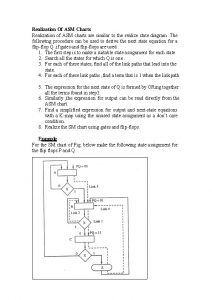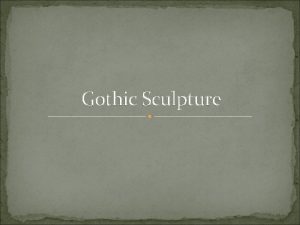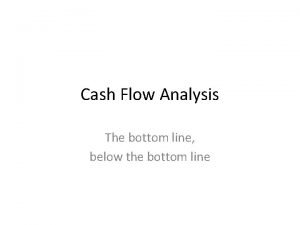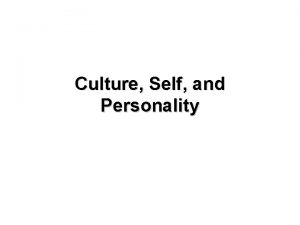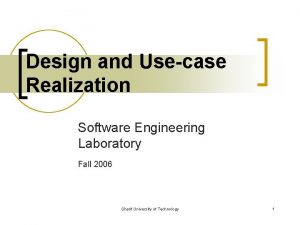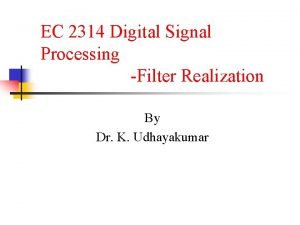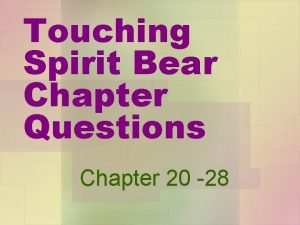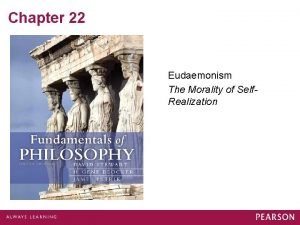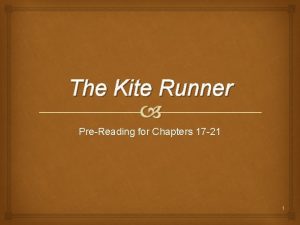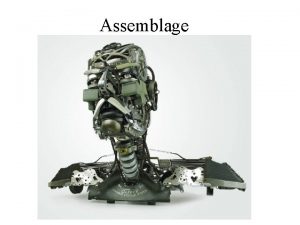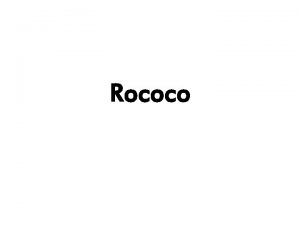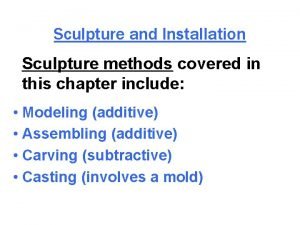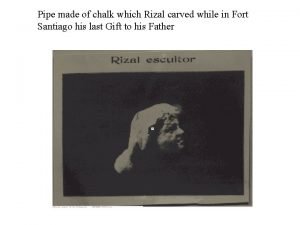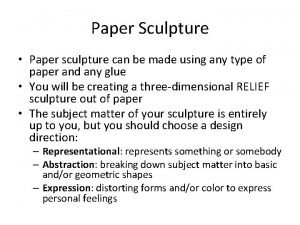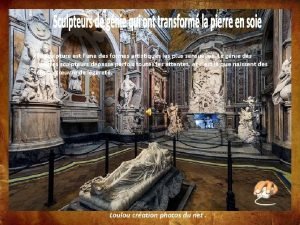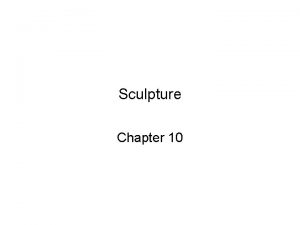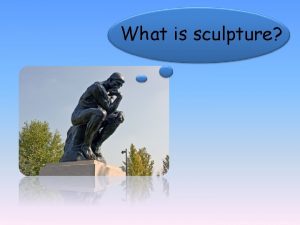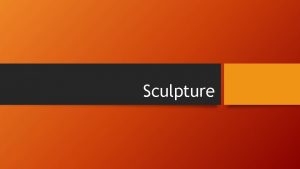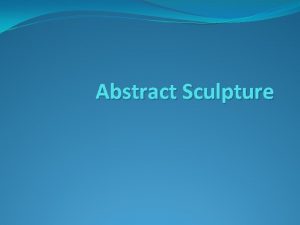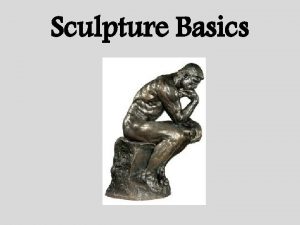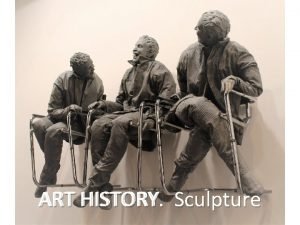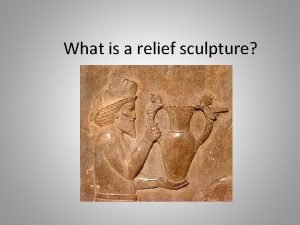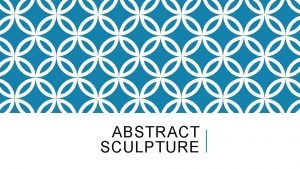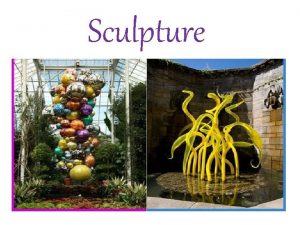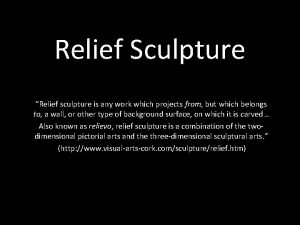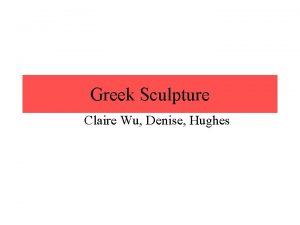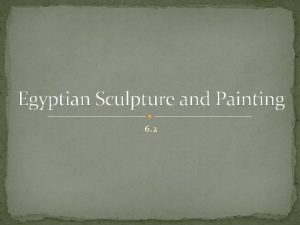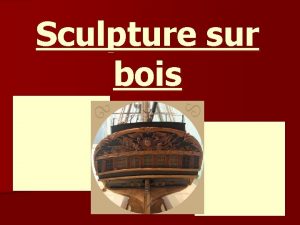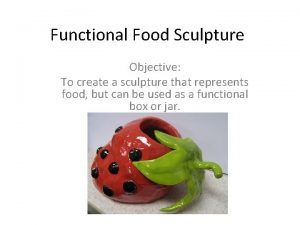Sculpture What is sculpture Sculpture is the realization































































- Slides: 63

Sculpture

What is sculpture ? • Sculpture is the realization of a design in three dimensions. It has volume, or contains height and width in addition to depth. • The sculptural terms for these three “directions” are… – HEIGHT - the vertical plane (up and down) – WIDTH - the horizontal plane (side to side) – DEPTH - the transverse plane (front to back)

The main categories of sculpture • All sculpture fits into two broad categories. • Additive Sculpture this is sculpture made from putting pieces together (assembly). • Subtractive Sculpture this is made by removing pieces from a whole (carving).

The types of sculpture • In addition to the two broad categories, there are three types of sculpture. • These are Relief, Intaglio and In the Round. • A piece of sculpture will be a specific type and fit into one of the two categories, for example… – A gravestone is a subtractive piece and an intaglio type.

In the Round • In the Round sculpture is sculpture that can be seen from all sides. • You can walk around a piece of In the Round sculpture and see it from all angles and different viewpoints.

Relief • Relief sculpture is raised up from a flat surface. • Relief sculpture can usually only be seen from one angle, but may appear to have multiple sides.

Intaglio • Intaglio is a type of sculpture that is carved down into a flat surface. • Intaglio can only be seen from one direction and is usually wall mounted.

Ground (negative space) removed, figure left flat to create a raised surface.



Background cut away and edges of figure ramped to create the illusion of depth.



Figure incised as lines (neither ground or figure is carved away) but outlined instead. . .


Entire surface carved away, creating the illusion of the figure projecting out from the surface.






Overlapping This is also called stacking. By allowing one object to overlap another, the artist creates the illusion of one object being in front of the other. This illusion can be emphasized by the use of “Changes of Level”.

Overlapping on its own however, while creating the feeling of objects behind and in front of one another, fails to create any real sense of “depth of field”.


Change of level Notice how a simple change of ground level in figure 1 creates the illusion of more depth. All the artist did was the place the mans feet higher in the picture plane than the dogs. He now looks further away.


some other examples. . .








Some student work…



Intaglio into Relief sculpture • Paper as a medium (paper sculpture)… • Cutting into the flat paper form to create an intaglio area… • Which uses the paper removed from the intaglio cut to create a relief form.














More complex forms… • More complex forms begin to fall into the “in the round” type of sculptural form.





Small scale…

Large scale…



Paper methodology • Paper stand-ups… – How many different ways can think of to make the paper stand up and be self supporting? • Paper texture… – How may different things can you do to the surface of the paper to create interesting visual textures?

Surface texture… Surface texture – cutting negative and positive forms into the flat sides of the paper can create visual interest and add structural support as well as scuptural principles.

Simple 3 D paper pop ups…
 Asm chart
Asm chart Romanesque and gothic sculpture
Romanesque and gothic sculpture What is use case realization
What is use case realization Cash realization ratio
Cash realization ratio Iso 13485 product realization
Iso 13485 product realization Use case realization
Use case realization Most generic, unqualified state of feeling good.
Most generic, unqualified state of feeling good. Usecase realization
Usecase realization Ladder structure realization of iir filter
Ladder structure realization of iir filter Touching spirit bear questions
Touching spirit bear questions Concept to realization
Concept to realization Self realization aristotle
Self realization aristotle Cash realization ratio
Cash realization ratio Kite runner chapter 16 quotes
Kite runner chapter 16 quotes Hát kết hợp bộ gõ cơ thể
Hát kết hợp bộ gõ cơ thể Tỉ lệ cơ thể trẻ em
Tỉ lệ cơ thể trẻ em Thế nào là mạng điện lắp đặt kiểu nổi
Thế nào là mạng điện lắp đặt kiểu nổi Lời thề hippocrates
Lời thề hippocrates Vẽ hình chiếu đứng bằng cạnh của vật thể
Vẽ hình chiếu đứng bằng cạnh của vật thể độ dài liên kết
độ dài liên kết Quá trình desamine hóa có thể tạo ra
Quá trình desamine hóa có thể tạo ra Môn thể thao bắt đầu bằng chữ đua
Môn thể thao bắt đầu bằng chữ đua Khi nào hổ mẹ dạy hổ con săn mồi
Khi nào hổ mẹ dạy hổ con săn mồi điện thế nghỉ
điện thế nghỉ Các loại đột biến cấu trúc nhiễm sắc thể
Các loại đột biến cấu trúc nhiễm sắc thể Thế nào là sự mỏi cơ
Thế nào là sự mỏi cơ Trời xanh đây là của chúng ta thể thơ
Trời xanh đây là của chúng ta thể thơ Gấu đi như thế nào
Gấu đi như thế nào Thiếu nhi thế giới liên hoan
Thiếu nhi thế giới liên hoan Vẽ hình chiếu vuông góc của vật thể sau
Vẽ hình chiếu vuông góc của vật thể sau Các châu lục và đại dương trên thế giới
Các châu lục và đại dương trên thế giới Một số thể thơ truyền thống
Một số thể thơ truyền thống Thế nào là hệ số cao nhất
Thế nào là hệ số cao nhất Slidetodoc
Slidetodoc Sơ đồ cơ thể người
Sơ đồ cơ thể người Tư thế ngồi viết
Tư thế ngồi viết Số nguyên tố là
Số nguyên tố là đặc điểm cơ thể của người tối cổ
đặc điểm cơ thể của người tối cổ Mật thư tọa độ 5x5
Mật thư tọa độ 5x5 Tư thế worm breton là gì
Tư thế worm breton là gì ưu thế lai là gì
ưu thế lai là gì Thẻ vin
Thẻ vin Bàn tay mà dây bẩn
Bàn tay mà dây bẩn Các châu lục và đại dương trên thế giới
Các châu lục và đại dương trên thế giới Bổ thể
Bổ thể Từ ngữ thể hiện lòng nhân hậu
Từ ngữ thể hiện lòng nhân hậu Diễn thế sinh thái là
Diễn thế sinh thái là Tư thế ngồi viết
Tư thế ngồi viết Thế nào là giọng cùng tên?
Thế nào là giọng cùng tên? 101012 bằng
101012 bằng Thể thơ truyền thống
Thể thơ truyền thống Bài hát chúa yêu trần thế alleluia
Bài hát chúa yêu trần thế alleluia Hổ sinh sản vào mùa nào
Hổ sinh sản vào mùa nào đại từ thay thế
đại từ thay thế Vẽ hình chiếu vuông góc của vật thể sau
Vẽ hình chiếu vuông góc của vật thể sau Cong thức tính động năng
Cong thức tính động năng Assemblage sculpture definition
Assemblage sculpture definition Characteristic of rococo art
Characteristic of rococo art The lost-wax process is what type of sculptural method?
The lost-wax process is what type of sculptural method? Model head of a dapitan girl
Model head of a dapitan girl It is a relief that barely extends past the base
It is a relief that barely extends past the base Romantic sculpture characteristics
Romantic sculpture characteristics Kinetic sculpture
Kinetic sculpture Ondine emergeant de l'eau
Ondine emergeant de l'eau
